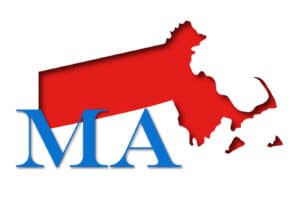On December 3, 2013 HUD previewed to NH&RA a series of new incentives and policy flexibility for owners of multifamily affordable housing properties that commit to making portfolio wide energy efficiency commitments through the Administration’s Better Buildings Challenge. HUD has developed these incentives to address the market and policy barriers that owners experience in greening their properties. The underlying policy will be issued in a separate and forthcoming Implementation Memo, to be released in FY-2014.
NH&RA’s Executive Director Thom Amdur noted, “We believe the incentives announced yesterday will have a significant impact and empower owners of HUD-assisted properties to invest in portfolio-wide energy efficiency improvements. We are excited to promote the Better Buildings Challenge and to help build capacity for owners to make cost-effective investments in energy improvements through our Preservation Through Energy Efficiency Initiative.”
Incentive Package:
- Allow Better Buildings Section 202 and Section 811 PRAC properties to invoice energy savings payments associated with property and tenant utility allowance reductions as an eligible expense to the property’s budget. PRAC properties typically have a more difficult time recapitalizing and their budget rent-setting process allows HUD to include reasonable eligible expenses. This incentive targets a segment with great need by allowing owners to recoup energy savings in their budget to service debt or access surplus cash associated with energy savings installed to reach the BBC target of 20% consumption savings. HUD will create 2 paths: an owner led and a third party led path. The latter will allow owners to utilize one-stop providers or intermediaries for their rehab and financing.
- Temporarily offer additional distributions to for profit and non-profit owners of Section 8 Properties. In order to allow owners of Section 8 properties to capture excess cash associated with energy savings that they otherwise would not be able to, HUD will allow additional distributions for the 10 years of BBC. There will be accountability checkpoints created to ensure owners are reaching their energy savings targets and the distribution will be on a property-by-property basis. This “Green Dividend” is a major component NH&RA’s Council for Energy Friendly Affordable Housing Federal Policy Recommendation for HUD and Congress.
- Management fee inclusion of energy/green measures. This incentive will allow management companies to pay for the additional cost of best practices in energy management. Given BBC’s requirement for data reporting, this incentive will alleviate some of the cost barriers associated with entering the competition. The eligible activities will include the cost of data collection, input, benchmarking, and potentially green operations & maintenance activities.
- Expedited approvals for “stand alone” greening in the field. MF will approve certain stand-alone green measures (that are not part of a larger rehab) with a clear set of parameters and schedule for BBC participants in order to enable streamlined green rehab. These pre-approved measures would not require a full review and approval in the field, which can be time consuming.
- Invite Better Building Participants to Send HUD Proposals if They Want to Use On-Bill Repayment. HUD policy neither expressly permits nor expressly prohibits the use of On-Bill Repayment (OBR), On-Bill Finance, or utility tariff programs as mechanisms for financing energy and water retrofits. Since HUD regulations might be interpreted to require HUD’s approval, owners and lenders need clarification before moving forward with On-Bill options. This incentive invites Better Buildings Participants to propose how to utilize on-bill repayment or finance, where applicable, given a set of general, basic parameters that MF will promulgate in the coming months. MF will work with owners to clear hurdles. This will also help MF formulate broad, portfolio wide guidance for On-Bill Repayment and Finance.
- Mark to Market (M2M) Waiver Amendment. Several owners have expressed a concern that older M2M properties undergoing rehab are not properly incentivized to green their properties. Currently, only existing M2M properties that achieve a green certification via rehab (i.e. LEED, Green Communities) are eligible for the Incentive Performance Fee (IPF) that increases owner distribution. This policy is inconsistent with the policy for properties entering M2M Green Initiative for the first time. This incentive allows existing M2M properties that adopt 75% of the green energy measures and all the water conservation measures recommended in the Green PCNA access to the IPF, consistent with the policy for first time M2M Green Initiative properties.
Click here for more details about HUD’s propose incentives.
Click here to learn more about the Better Buildings Challenge.

